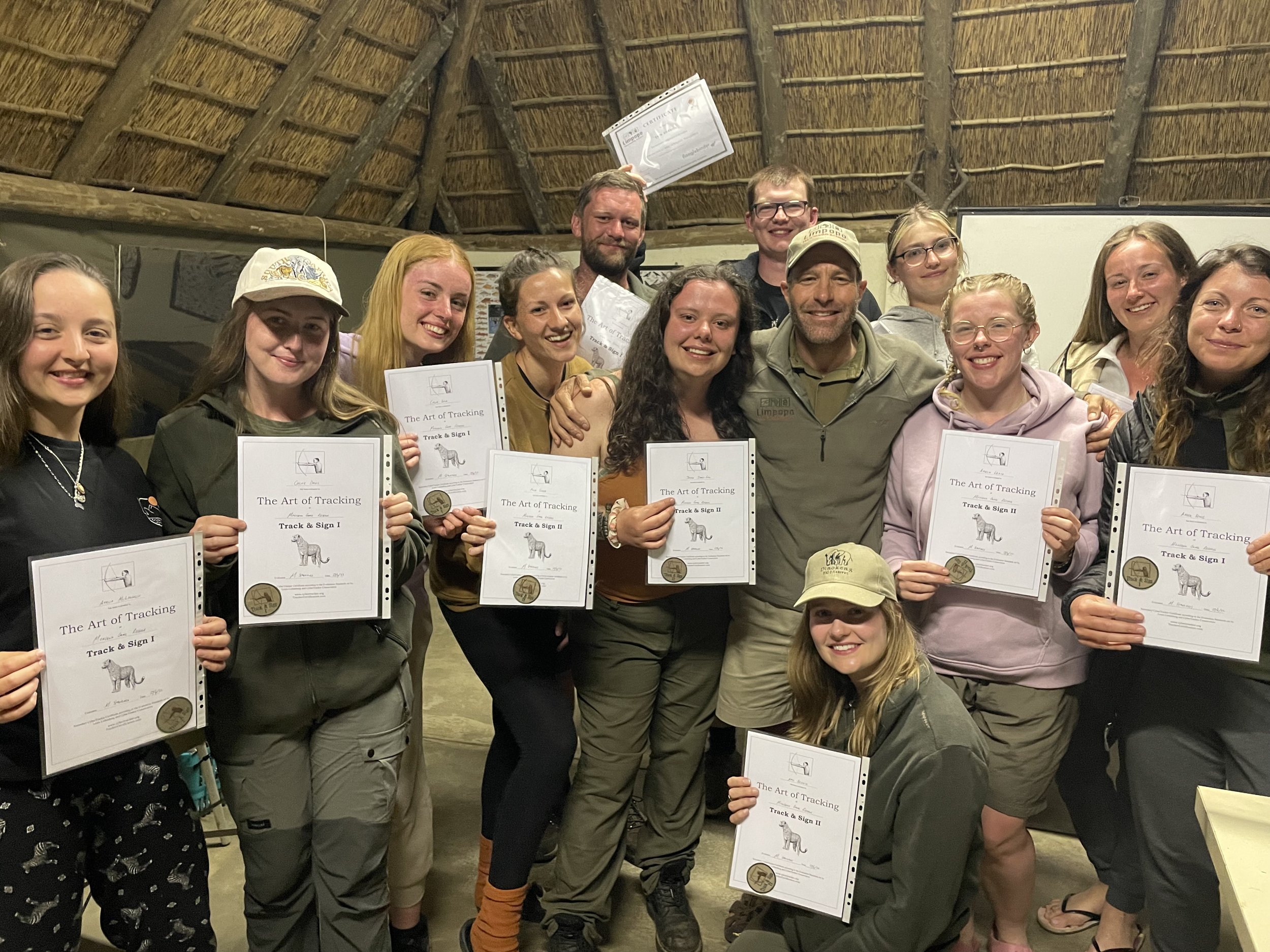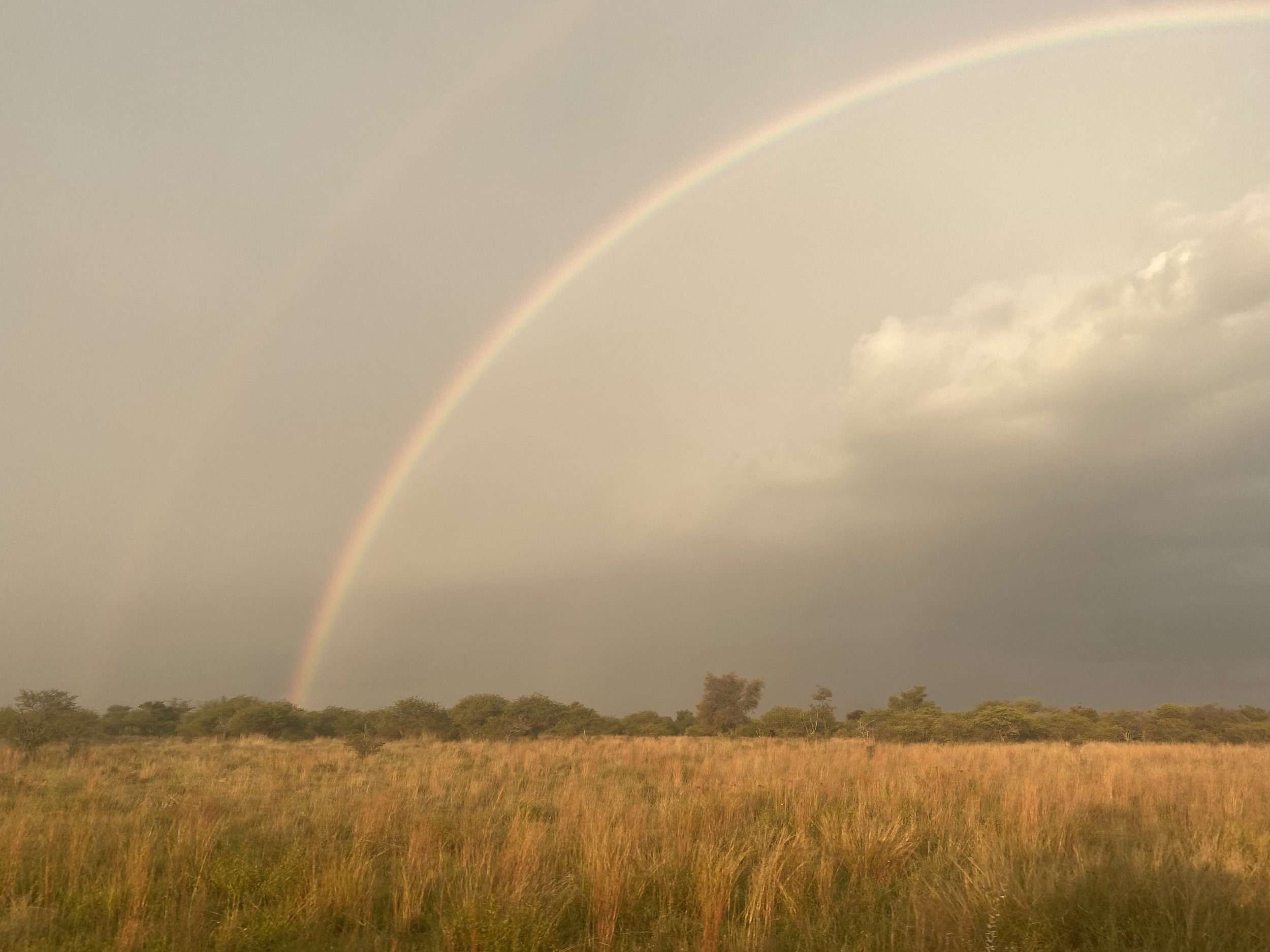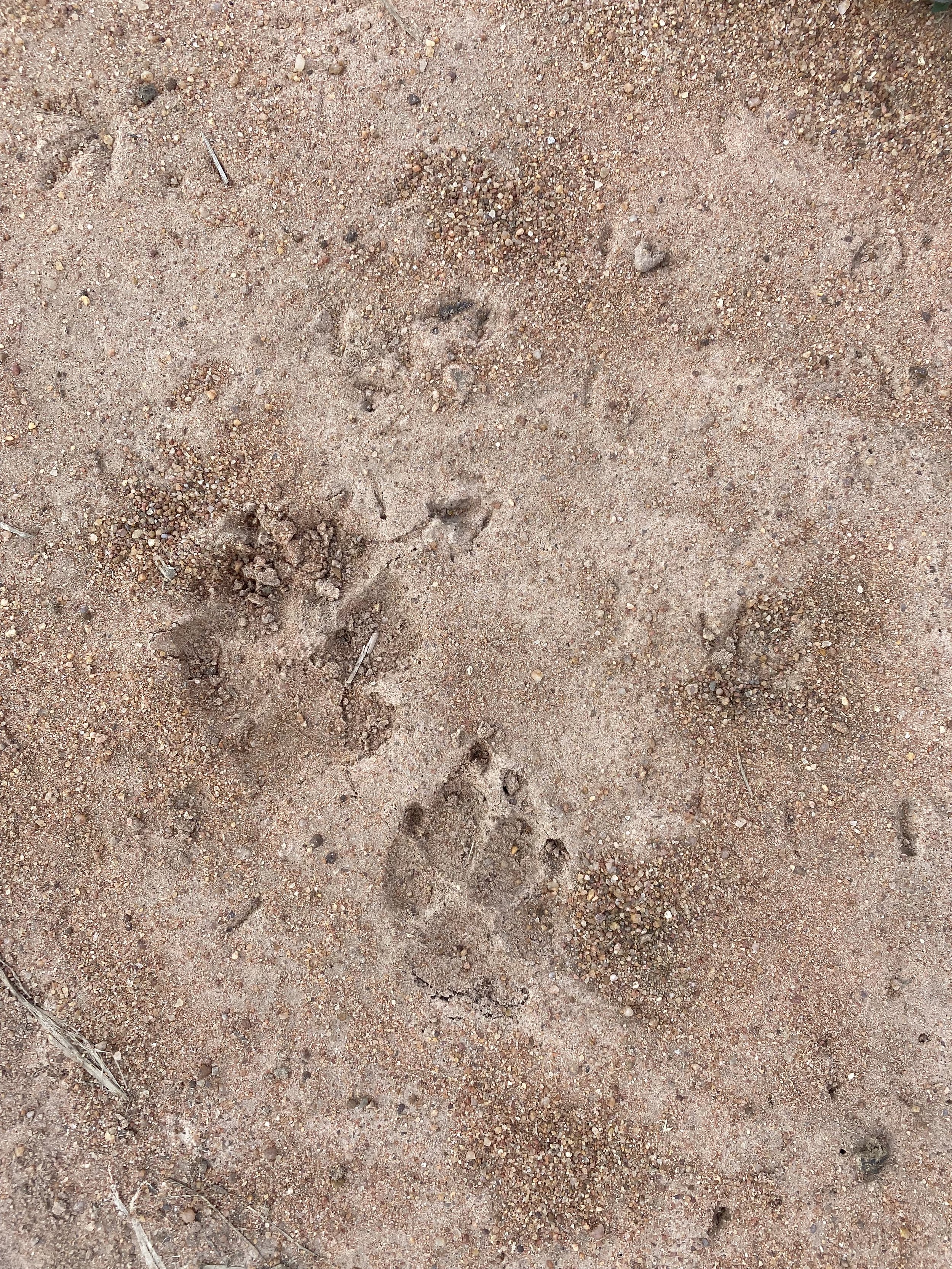South Africa - Camping and Tracking
Author: Polly Sadler, Conservation Enthusiast
Read time: 3 minutes
Flooglebinder are travel experts and a certified B Corporation with tour experience in over 75 countries. We curate sustainable bespoke adventures that incorporate sustainability, conservation and wellness. As a BCorp organisation we use business as a force for good, meet the highest standards of verified performance, accountability and transparency, whilst tracking and monitoring our social and environmental impact.
The second half of our time in South Africa saw us camping in the wild. We were provided with two-man army-style tents, each with folding camping beds. The facilities were basic and perfect for the feeling of complete immersion into the wild.
“The guides were encouraging and reassuring”
The campsite sat in the middle of the 21,000-hectare (equivalent to twice the size of Liverpool) reserve. It was sandwiched amongst reeds between a dam and a river and was only accessible via one narrow dirt road - a dirt road that had a habit of turning into one extended, muddy puddle.
At night, the silence was broken only by the honk of a nearby hippo or the persistent trilling of hundreds of frogs. The nights were cold, and the days were hot and sweaty. From here, we went on game walks and completed our track and sign course.
Our walks were fascinating. Apprehension ensued on leaving the vehicle, not knowing what could be lurking behind the nearest bushes. But we trusted our field guides completely and followed their every move and instruction. Walking through the bush is a completely different experience than driving through. In the vehicle, you are restricted to the road systems of the reserve, but on foot, there is so much more to see. We observed incredible spider webs, and the remains of gruesome carcasses, evidence of past hunts and ill-fated individuals. Being on foot enabled us to get up close with tracks and signs that could not exist on the roads such as wallowing pits, still imprinted with the characteristic wrinkles of an elephant’s rough skin. Being without a vehicle also allowed us to listen to the sounds of the bush - birds, reptiles and distant mammals going about their day. Our guide Pines blew our minds when he recited the call of an owl species, resulting in a swooping visit of a young owlet. What a thing to witness.
From the first game drive on our first day in the country, the guides would frequently stop on the side of the road and point out seemingly insignificant things to the untrained eye. This could be a small protruding mass on the branch of a tree or a slight indentation in the sand - completely indiscernible to us students. It could also be a large footprint, unmistakably that of an apex predator. Gradually we would start to recognise the tracks and signs left behind by the residents of the reserve. Pointing at a footprint and being able to correctly identify it is extremely fulfilling, and it was this feeling that we chased into the track and sign course.
“At night, the silence was broken only by the honk of a nearby hippo or the persistent trilling of hundreds of frogs”
The course lasted the best part of a week. It was without a doubt one of the most intense weeks of my life. We collectively plunged ourselves into a world of poo, footprints and strange markings, and it became highly important to the vast majority of us to do well in the assessment. The week consisted of 4 days of practice assessments with a concluding assessment on the 5th day. The practice days were structured the same as the assessment day - we would be given 50 tracks or signs, 5 or 6 at a time, and would have to identify each. Sometimes the questions called for a 4 part answer - name the species, gender, gait and foot. Some were simpler - name the species. After each day we were given a score in the form of a percentage. The grading criteria were as follows - 70% for level 1, 80% for level 2, 90% for level 3, and 100% for professional.
“Being on foot enabled us to get up close with tracks and signs that could not exist on the roads”
The guides were encouraging and reassuring. We were assured that each time we got something wrong (which was a lot), we would get one more right the next time. And they were right. On day 1 we were getting 30-40% and were all sure we would fail miserably. Day 5 saw us receiving respective scores of 60-85%, a vast improvement and the ultimate reward for the mental capacity we had concentrated on the course. It was indescribably gratifying, and the perfect way to round off an incredible South African experience.




































